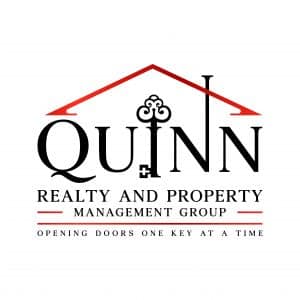Reliable Solutions by Quinn Realty and Property Management Professionals
Reliable Solutions by Quinn Realty and Property Management Professionals
Blog Article
Optimizing Property Administration Procedures for Long-Term Productivity and Tenant Retention

Effective Communication Techniques
Efficient interaction is critical in optimizing property monitoring procedures. Effective and clear communication ensures that all stakeholders, consisting of building owners, tenants, maintenance team, and administration, are on the very same page, resulting in smoother operations and enhanced renter satisfaction. One critical aspect of reliable interaction is setting clear assumptions from the start. Property supervisors ought to plainly describe lease terms, upkeep procedures, and communication networks to avoid misconceptions down the line.
Utilizing technology can likewise substantially enhance communication performance in home monitoring. Applying residential or commercial property administration software application that allows for real-time updates, automated alerts, and easy documentation can improve communication procedures and boost total functional effectiveness. Additionally, routine communication through various channels such as e-mail, phone telephone calls, and in-person conferences can aid cultivate favorable partnerships with lessees and resolve any type of problems immediately.
Innovation Combination for Maintenance
In the world of property monitoring optimization, a vital part that improves functional effectiveness and maintenance processes is the assimilation of modern technology for improving upkeep jobs. By integrating technology into upkeep procedures, property supervisors can benefit from improved job order administration, aggressive upkeep scheduling, and enhanced interaction with upkeep groups and occupants.
One significant benefit of innovation integration in upkeep is the capability to centralize job orders and track maintenance demands electronically. This enhances the process of receiving, appointing, and completing maintenance tasks, resulting in quicker response times and boosted renter satisfaction. Anticipating maintenance modern technologies can help in determining possible issues prior to they escalate, decreasing the chance of costly repair work and minimizing downtime.

Data-Driven Choice Making
Utilizing data-driven understandings empowers building managers to make informed decisions that optimize operational performance and make best use of possession efficiency. Quinn Realty and Property Management. By leveraging data analytics devices and technologies, property managers can draw out important information from different resources such as tenant comments, upkeep records, and market patterns. This information can offer vital insights into renter choices, functional bottlenecks, and cost-saving chances
Data-driven decision-making makes it possible for residential or commercial property managers to determine patterns and fads that may not appear with typical observation. Evaluating upkeep information might disclose reoccuring concerns in specific devices, permitting supervisors to proactively address underlying problems and prevent future costly fixings. In addition, by monitoring tenant complete satisfaction metrics and lease renewal prices, residential or commercial property managers can tailor their solutions to fulfill lessee expectations, eventually enhancing renter retention and long-lasting success.
In addition, data-driven understandings can likewise inform critical investment choices by highlighting areas for renovation or development based on market need and performance metrics. On the whole, including data-driven decision-making processes right into building administration procedures can result in more reliable resource appropriation, improved lessee satisfaction, and enhanced profitability in the lengthy run.
Renter Complete Satisfaction Campaigns
Attracting understandings from data-driven decision-making, building managers can execute targeted renter fulfillment campaigns to improve general leasing experiences and foster lasting occupant partnerships. By comprehending occupant choices and pain points, building supervisors can tailor their solutions to meet the specific demands of their occupants, ultimately bring about greater contentment levels and increased tenant retention prices.
One reliable renter contentment initiative is to develop clear lines of interaction with occupants to deal with any kind of worries promptly. Routine responses studies can likewise offer important understandings into tenant satisfaction degrees and areas for renovation. Home supervisors can utilize this responses to make required modifications and show occupants that their viewpoints are valued.

Additionally, arranging neighborhood occasions and facilities that satisfy the rate of interests of renters can produce a sense of belonging and boost total complete satisfaction. By fostering a engaging and favorable community environment, home supervisors can strengthen renter relationships and motivate long-term leases, inevitably increasing profitability and renter retention over time.
Enhancing Operational Procedures
Effectiveness is paramount in home monitoring, demanding the optimization of operational processes to view website enhance efficiency and make the most of sources. Improving operational processes involves recognizing areas for improvement, getting rid of redundancies, and carrying out systems that improve general effectiveness. One crucial aspect of improving functional processes is the integration of modern technology solutions such as building administration software application, which can automate jobs, streamline communication, and give real-time data insights. By digitizing procedures like upkeep demands, rent collection, and lease renewals, building read supervisors can save time, lower errors, and improve occupant fulfillment.
In addition, executing standardized treatments and workflows can help produce consistency throughout residential or commercial properties, lower complication, and simplify daily procedures. Frequently examining and maximizing these procedures is necessary to adapt to changing market problems, lessee demands, and regulative needs. By continuously seeking methods to improve operational procedures, property supervisors can not only enhance their very own efficiency but also provide better services to renters, inevitably leading to long-term productivity and lessee retention.
Conclusion
To conclude, enhancing residential or commercial property administration operations through effective communication, innovation integration, data-driven choice making, lessee complete satisfaction campaigns, and enhancing processes is necessary for long-lasting profitability and tenant retention. By executing these techniques, home managers can improve operational performance, decrease expenses, and improve lessee complete satisfaction, ultimately causing increased success and tenant commitment. It is crucial for home management firms to continually review and readjust their operations to satisfy the progressing requirements of both lessees and the market.
Clear and reliable interaction ensures that all stakeholders, consisting of residential property proprietors, renters, upkeep team, and administration, are on the same page, leading to smoother procedures and raised tenant complete satisfaction - Quinn Realty and Property Management. By keeping track of lessee satisfaction metrics and lease renewal rates, residential property supervisors can customize their solutions to meet renter expectations, eventually enhancing lessee retention and lasting profitability
By constantly seeking methods to enhance functional procedures, building supervisors can not just raise their very own performance yet additionally supply far better services to renters, inevitably leading to long-lasting earnings and occupant retention.
In final thought, enhancing residential property management operations through efficient interaction, modern technology combination, data-driven decision production, lessee contentment campaigns, and enhancing processes is important for long-lasting productivity and tenant retention (Quinn Realty and Property Management). By applying these approaches, building supervisors can improve functional effectiveness, decrease prices, and improve renter satisfaction, eventually leading to enhanced home success and occupant loyalty
Report this page